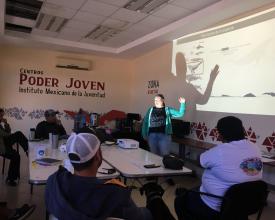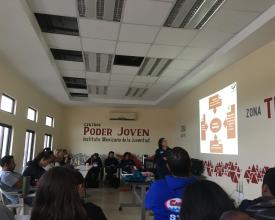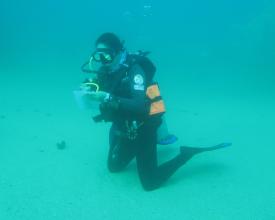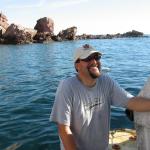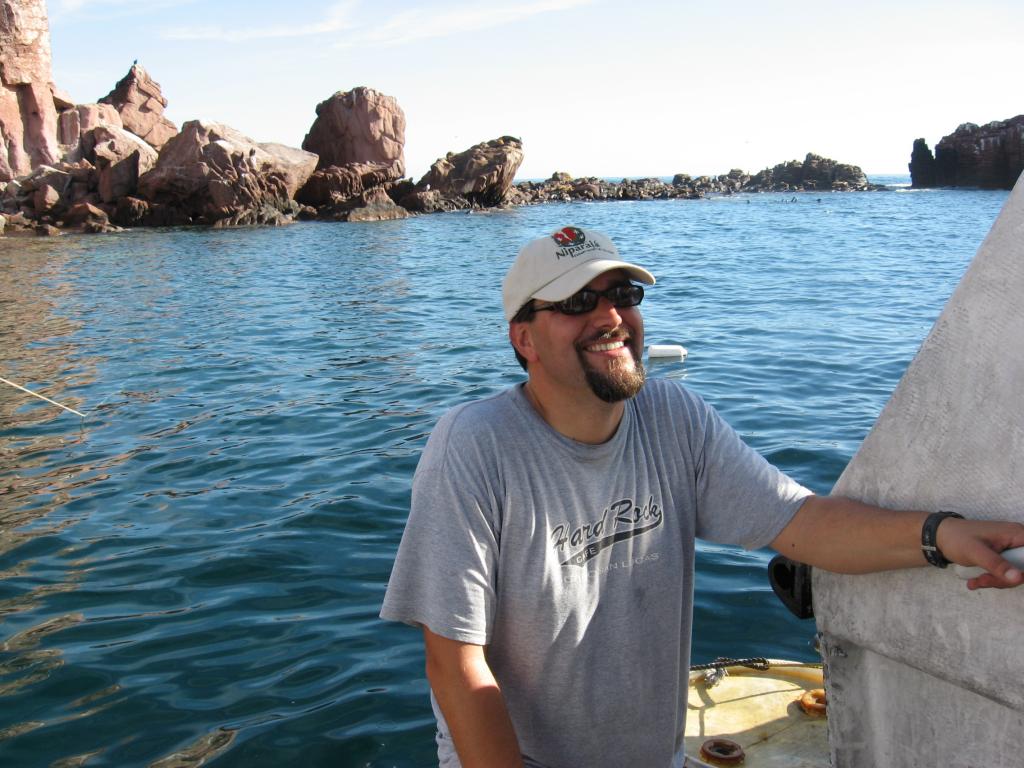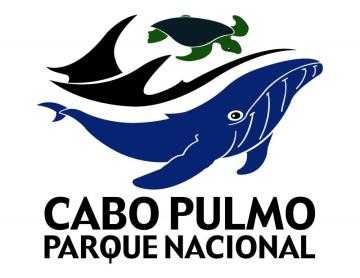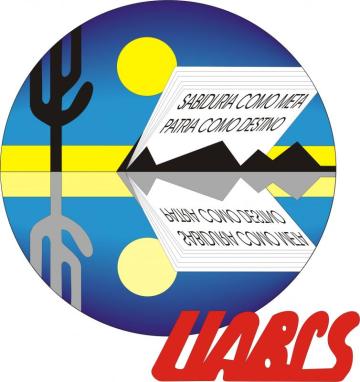
CABO PULMO NATIONAL PARK: PARTICIPATION FOR ITS CONSERVATION
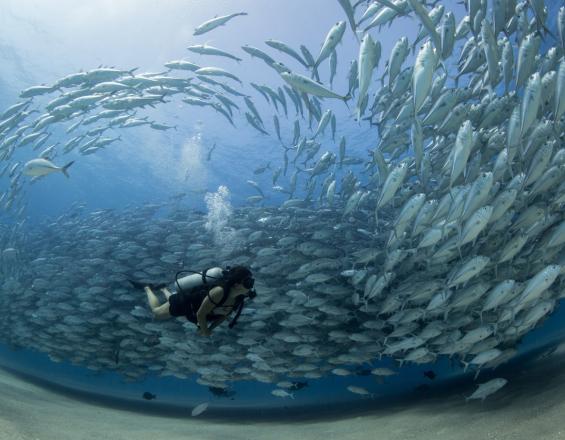
Faced with the constant deterioration caused by uncontrolled fishing, and with the help of academics, 25 years ago the inhabitants of the community of Cabo Pulmo, Mexico, decided to stop fishing and change gears by focusing on sustainable tourism. The first 14 years of the Park saw the need to better regulate human activities, until 2009 when the Management Program was published. However, some rules defined in it were still not specific to tourist activities. That year, work began on a Public Use Program (PUP), to establish these rules. The PUP has been built in collaboration with the community, academics, tourism service providers, CONANP and Civil Society Organizations. During these years we have witnessed that the sum of participation, capacity building and management actions, give as a result environmental benefits to the reef and economic ones for the local community.
Context
Challenges addressed
1. Conserve the marine biodiversity of the Cabo Pulmo reef.
2. Maintain the ecosystem services offered by Cabo Pulmo National Park.
3. Effectively manage recreational activities carried out by tourism in Cabo Pulmo.
4. That the Public Use Program continues to be the result of a broad participatory process among the community, tourism service providers, the Park Management, Civil Society Organizations and academics.
5. That the rules of the Public Use Program be recognized by all users and providers of tourism services, in addition to seeking its official validity.
6. Strengthen the bond of trust between tourism service providers, main users and beneficiaries of the use of the NPA, with the Park Management, Civil Society Organizations and academics, in decision-making on the management and conservation of the protected area.
Location
Process
Summary of the process
On the one hand, the participatory process under which the Public Use Program was built reflects that with organization and will, conservation of a site can be achieved, in this case, Cabo Pulmo National Park. On the other hand, the constant training of tourism service providers makes companies and their workers increasingly stronger by offering a more professional service to visitors while carrying out their activities respecting and conserving the reef. And finally, the surveillance actions monitor the enforcement of the agreed rules, thus closing the circle of participatory and responsible management.
The combination of participation-training-management actions has strengthened the operations of tourism service providers and the management of the National Park while obtaining benefits for the local community.
It should not be forgotten that the multiplier factor of all these actions focuses on the community of Cabo Pulmo, which has a long history of actions for the conservation of the reef, because thanks to them it was possible to protect it in perpetuity.
Building Blocks
1. Effective participation of tourist service providers in the Public Sub-Council
In 2011 a carrying capacity study (free and autonomous diving) was carried out in Cabo Pulmo by the Autonomous University of Baja California Sur (UABCS), funded by Friends for the Conservation of Cabo Pulmo (ACCP) and supported by Tourist Service Providers (TSP). This study established the basis of the Public Use Program and its results were discussed and modified based on the experience of all stakeholders. In 2014, the Sub-Council for Public Use was established, which is made up of CONANP, the TSP, Niparajá and UABCS. Within the agreed rules is a system of warnings where the TSP inform CONANP about each of their trips through VHF radio, in real time, recording the number of tourists and the places they will visit. The meetings of the Sub-Council for Public Use also defined the maximum number of vessels simultaneously per site, in order not to present a saturation of vessels, as well as other agreements related to the management of tourism activities. During 2016 we carried out the evaluation of compliance with the rules; of the 55 agreements, 90% were implemented and respected by the TSP. The active participation of providers since the inception of the rules has ensured their wide compliance.
Enabling factors
The Sub-Council involves all sectors, and its work includes constant updating of the Public Use Program.
It has been possible to establish together the rules for the activities so that the experience of the visitors has not diminished, which is reflected in people who year after year return to the site and the high tourist demand on the site. This tourism has brought benefits to the town that has once again diversified its sources of income by investing in restaurants, lodgings and shops selling crafts and souvenirs.
Lesson learned
It is necessary to have transparent and participatory processes to achieve the involvement of a community for the sustainable development and conservation of the Cabo Pulmo National Park, its ecosystems and species.
It is important to have guides, captains, tourist service providers and informed tourists to among all achieve the conservation of the reef and diving sites for the future.
An organized community that establishes and abides by rules can contribute significantly to the conservation of a protected natural area.
2. Training and accreditation for tourism service providers
Since the consolidation of the Public Use Program (PUP), which requires that the TSP have accredited guides and captains; CONANP with support from Niparajá have given these accreditation courses. During 2016, 95 guides and 35 captains were trained; in 2017, 64 guides and 36 captains were trained; in 2018 a total of 60 guides and 16 captains were trained; and in 2019, 97 guides and 39 captains were trained. As of 2019, and with the aim of providing tourism service providers with more and better knowledge of the ecosystem, three different courses were developed: a basic course for captains who are presenting themselves for the first time; a basic course for new guides; and an advance course for guides and captains who have been working for more than a year at the NPA. The advance course considers the presentation of talks given by experts on topics not considered as shark biology, whale watching or the population dynamics of fish. The training courses are valid for one year for guides. After one year, an evaluation is applied; if it is successful the new guides can participate in the advanced course, otherwise they will have to participate in the basic. The courses for captains are not valid, only the basic course is mandatory.
Enabling factors
Guides and captains who pass their course enter a list of accredited guides and captains and are given a badge that accredits them to work in the Park. This small badge is extremely important because it serves as a support in the control and management actions by the authorities of the National Park.
The modification and inclusion of new topics of interest to tourism operators in the training courses, favored the more active participation of experienced guides and captains since the content was very repetitive for them.
Lesson learned
Having a list of guides and captains accredited, informed and trained by the Park Directorate helps to promote the best practices of diving and recreational activities.
The knowledge and updating of the rules of Public Use by the operators reduce the impacts of tourism activities on the reef.
A Training Manual was developed in a digital version that is sent to all participants in the courses and serves as a support to reinforce the knowledge acquired by guides and captains.
3. Management actions of the directorate to monitor and track the use of public sites.
The rapid growth of tourism has caused negative impacts on reef ecosystems, caused mainly by inexperienced or careless divers. Damage has been observed since 2011. Later, in 2015 it was found that the sites of greater tourist use had more fragmented corals mainly of the genus Pocillopora. In 2016, CONANP and NIPARAJÁ participated in a workshop to exchange experiences on monitoring protocols of tourism use in Protected Natural Areas, where a standardized methodology was proposed to carry out impact monitoring and underwater monitoring. The impact assessment is carried out using the “Protocol for Monitoring Impacts and Surveillance of Snorkel and Autonomous Diving Activities for Marine Protected Areas” which has been used to know the impacts generated by recreational diving in sites with reef ecosystems, focusing on the number of contacts each diver makes on the substrate and the number of times corals are broken over time. Since 2017, the National Park personnel have been carrying out underwater monitoring and surveillance of diving groups. At each dive, a diver or tourist is selected and monitored for 10 minutes.
Enabling factors
The presence of the management authorities of the National Park in the areas of public use allows the immediate detection of bad diving practices carried out both by tourists and their guides. This allows us to come into direct contact with them to explain the observed situation and thus be able to correct their performance.
Also, it is favorable that managers can monitor and supervise in real time the conditions of the reef and its elements.
Lesson learned
It is important to mention that even though the managers of the protected area make every year a greater effort in underwater monitoring and the training courses on good diving practices have been maintained, the percentage of contacts by tourist divers on the environment has not reduced considerably. But a decrease in contact/impact on the reef structures has been detected.
It is extremely important to continue the underwater monitoring efforts in conjunction with the training of the guides to strengthen the management actions of the Cabo Pulmo National Park and the protection of the coral reef.
Impacts
• In Cabo Pulmo ecotourism activities are developed as a viable economic alternative for the community, supported by good practices and a Public Use Program, accompanied by good management by the directorate of the Park.
• There are carrying capacities for diving and snorkeling sites, so that tourist pressure is reduced and the impacts that the reef can have are minimized by those visitors who experience the place each year.
• There is a list of guides and captains accredited, informed and trained by the directorate of the Park to lead groups of visitors in the Park.
Beneficiaries
The providers of tourist services by their continuous involvement in conservation.
The community for tourism activities.
CONANP in fulfilling its mission to conserve the protected area’s biodiversity and ecosystem services.
Sustainable Development Goals
Story
As the Director of the protected area indicates, the Public Use Program of the National Park is not a decision of the National Park, but is a collegiate decision, voted and agreed with all users of the Park, supported by Civil Society Organizations and supported by academic institutions.
And although the problem of visitor management in the protected natural area is not fully solved, several service providers recognize that the Public Use Program does have favorable results by decreasing the oversaturation of diving sites and improving relationships between the various users.
Cabo Pulmo National Park has been a pioneer in the planning and development of complementary instruments that strengthen management and promote social participation.


